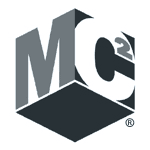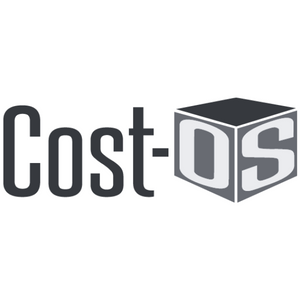How to Choose the Best Software for Estimating in 4 Steps
This article was written by Stewart Carroll, Beck Technology Chief Customer Officer.
When faced with tough business decisions of any type, it’s easy to get overwhelmed by uncertainty.
There are many factors to consider before a company commits to moving forward with choosing the best estimating software for preconstruction. What if there is another option that hasn’t been considered or unknown risks with the preferred option? From a management perspective, is this the right choice for the company’s future? From an implementer’s perspective, does the company have the resources and support to derive the value from the decision?
But choosing your construction estimating software doesn’t have to be one of those overwhelming decisions. These four easy steps will help streamline the selection process, allowing you to make the right decision faster:
- Know your company’s objectives
- Secure support from management
- Evaluate solutions and vendors
- Create an implementation plan
Know Your Company’s Objectives
Before you can select the best preconstruction estimating software, you must first understand your company’s long-term vision. Only then can you be sure that the chosen software will help achieve organizational goals. This vision will help you determine the need for additional resources, cross-training personnel, and updated computer hardware and infrastructure. Later in the product selection process, knowing the company’s objectives will help you focus software and vendor evaluations.
Some questions to ask as you document and clarify objectives:
- What do we hope to achieve as the end goal by investing in this technology?
- How is this approach better than our current process or technology?
- What processes or roles will change as a result of this software?
- What are the time and resource considerations that come into play?
Secure Support from Management
Notice this step comes before “evaluate solutions and vendors.” That’s because getting management buy-in early in the process means getting company support, someone asking tough questions throughout the process, and a management team that’s educated about the realities of software implementation.
Delaying this step until after you’ve vetted software and vendors often wastes valuable time. For example, if management knows leadership or product and service changes are coming and can’t commit to major purchases, all of your effort will be shelved until “the timing is right.”
Getting support from management also helps determine what success looks like. You are able to set realistic goals and expectations as you move into the next steps of the process and report up to management on those success factors. This gives management greater buy-in to the decision.
Some questions to discuss with your management include:
- What questions do you have regarding our business case and objectives?
- At what stage or stages do you wish to be involved, and at what level, as we evaluate solutions?
- How will you measure the success of this investment of time and money?
- How does our request for a technology investment fit with other department/company requests and business cases? What’s the priority for our effort in your view?
Evaluate Solutions and Vendors
Plan to do a lot of research on software before actually using it. Compare competitors, know the software’s limitations, understand the required IT infrastructure, get an idea of return on investment, and have a consistent evaluation framework. Comparing apples-to-apples is great, but when the evaluation framework changes mid-stream, you end up comparing apples-to-oranges-to-bananas-to-strawberries.
Evaluations can often focus purely on features and functions which can cause evaluators to lose sight of the big picture. Look beyond the bells and whistles and evaluate whether the solution allows the company to successfully meet its business objectives. This does not imply that evaluators should select functionally deficient products, but rather the right functionality to successfully do those tasks that impact the business objective the best. Also, and perhaps more importantly, does the product also address our future business needs?
There’s much more to ROI than the cost of the software. You must also take into account how much training is required, whether an IT hardware upgrade is needed, and how quickly the software can start doing what you need. Depending on the technology in question, your internal team may well include a member from IT, finance, sales or delivery; each role will evaluate from a different vantage point which proves invaluable as systems integrate so often.
Certainly, this step generates dozens of questions for your team and the vendors such as:
- What are the exact hardware specifications, API interface options and compatibility requirements?
- What training or onboarding is included with the solution?
- What is the availability of support staff and the escalation process for implementation or use challenges? Is this included in our base fee or provided for an additional cost?
- What implementation plans, guidelines and setup materials are you able to provide?
Don’t just evaluate the software itself – be sure to take a long, hard look at the vendor. Many intangible factors carry weight in the decision. Is the vendor agile and responsive to questions? Does the vendor’s vision align with your company’s? Does the vendor want your feedback, or do they only want you to buy their software? Is the vendor willing and able to share future software developments? You’re selecting software that may overhaul your company and springboard it over the competition, so take the time to make sure you want to do business with that vendor for the long haul.
Create an Implementation Plan
Having a strategy, following a schedule, setting milestones, and developing metrics you will use to monitor progress are vitally important. The vendor should work with your team to build this implementation plan. Adopting major software platforms often results in cultural changes that need to be managed and training efforts that need to be defined. Your selected software vendor will have been through countless implementations and can help you set the path to a successful process.
Some organizations rely on standardized project plans while others develop plans based on the specific technology in question. As you build your implementation plan some considerations include:
- Identify the key stakeholders at every stage and role. Consider a RACI chart format to document who is Responsible, Accountable, Consulted, and Informed.
- Determine key milestones and dependencies for the project.
- Ensure all key players are involved in the onboarding and training efforts.
- Document the change management steps and approach to rollout for both internal employees as well as any external audiences affected.
The power of technology to reduce time, improve accuracy, provide transparency and harness big data insights is immense. That being said, the human element very much comes into play: how well does your vendor support and collaborate with you; how engaged is your team in the process and how well do they understand the value; how many competing priorities are on the project team’s plate; and more. With any technology solution, you get the best value based on what you put in from start to launch.
A good framework for a thorough software selection process not only makes the decision easier, but faster. Know where your company is going, secure management support, explore software, and team up with the right vendor to get up and running fast and get the most out of your investment.

-1.png?width=112&height=112&name=image%20(4)-1.png)















